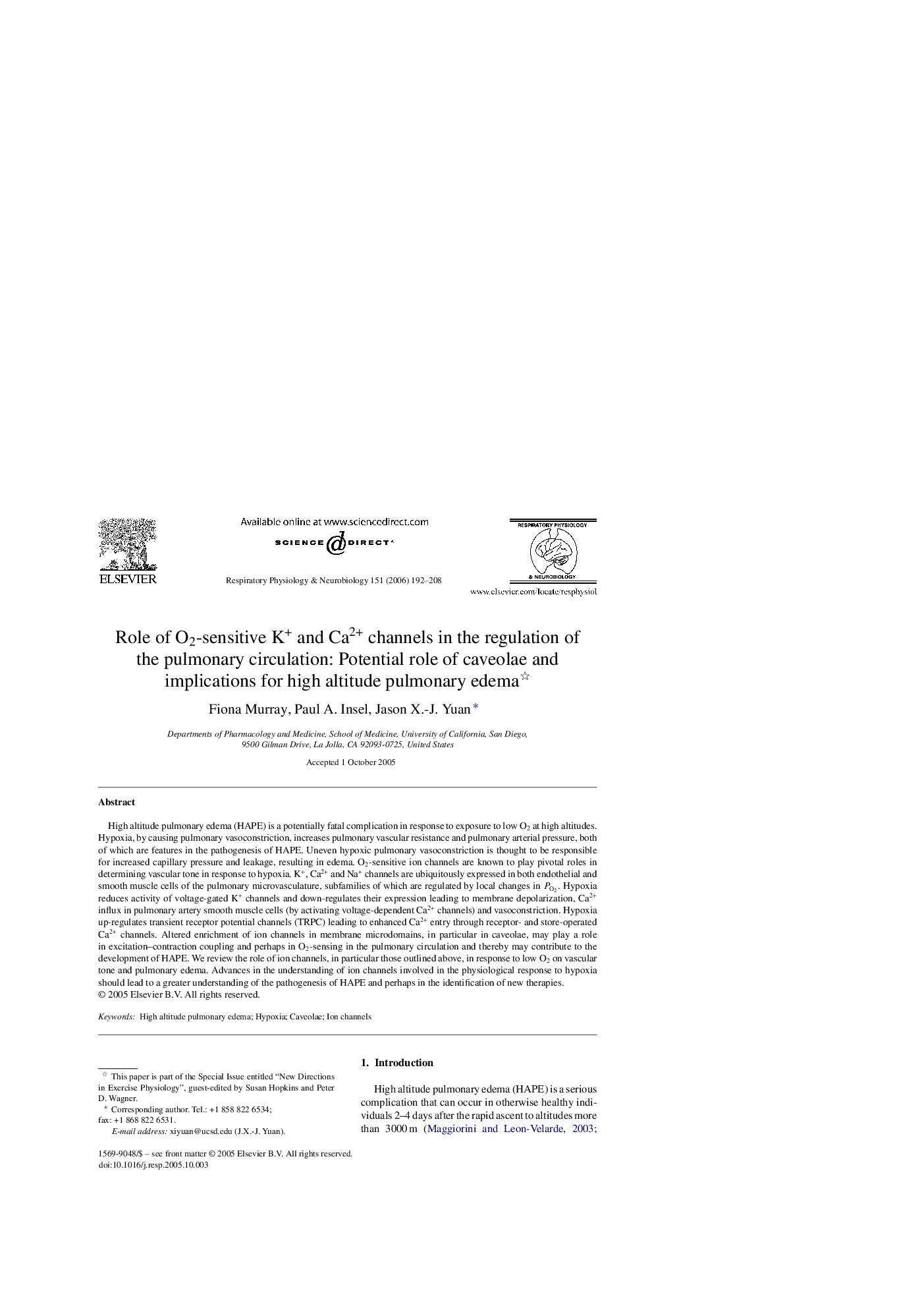| Article ID | Journal | Published Year | Pages | File Type |
|---|---|---|---|---|
| 2848525 | Respiratory Physiology & Neurobiology | 2006 | 17 Pages |
High altitude pulmonary edema (HAPE) is a potentially fatal complication in response to exposure to low O2 at high altitudes. Hypoxia, by causing pulmonary vasoconstriction, increases pulmonary vascular resistance and pulmonary arterial pressure, both of which are features in the pathogenesis of HAPE. Uneven hypoxic pulmonary vasoconstriction is thought to be responsible for increased capillary pressure and leakage, resulting in edema. O2-sensitive ion channels are known to play pivotal roles in determining vascular tone in response to hypoxia. K+, Ca2+ and Na+ channels are ubiquitously expressed in both endothelial and smooth muscle cells of the pulmonary microvasculature, subfamilies of which are regulated by local changes in PO2PO2. Hypoxia reduces activity of voltage-gated K+ channels and down-regulates their expression leading to membrane depolarization, Ca2+ influx in pulmonary artery smooth muscle cells (by activating voltage-dependent Ca2+ channels) and vasoconstriction. Hypoxia up-regulates transient receptor potential channels (TRPC) leading to enhanced Ca2+ entry through receptor- and store-operated Ca2+ channels. Altered enrichment of ion channels in membrane microdomains, in particular in caveolae, may play a role in excitation–contraction coupling and perhaps in O2-sensing in the pulmonary circulation and thereby may contribute to the development of HAPE. We review the role of ion channels, in particular those outlined above, in response to low O2 on vascular tone and pulmonary edema. Advances in the understanding of ion channels involved in the physiological response to hypoxia should lead to a greater understanding of the pathogenesis of HAPE and perhaps in the identification of new therapies.
